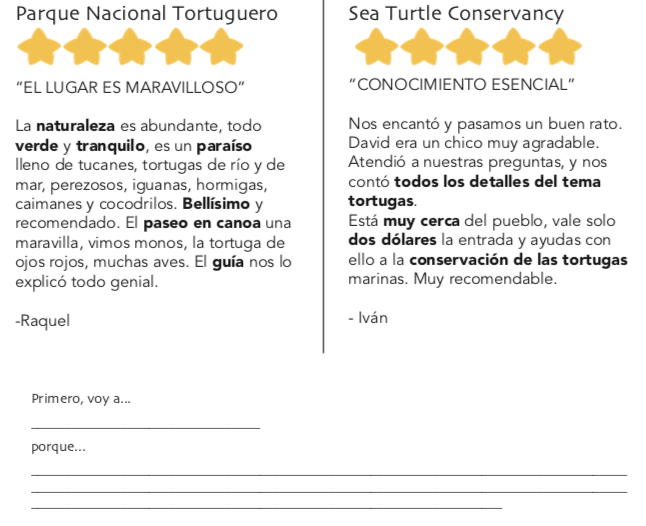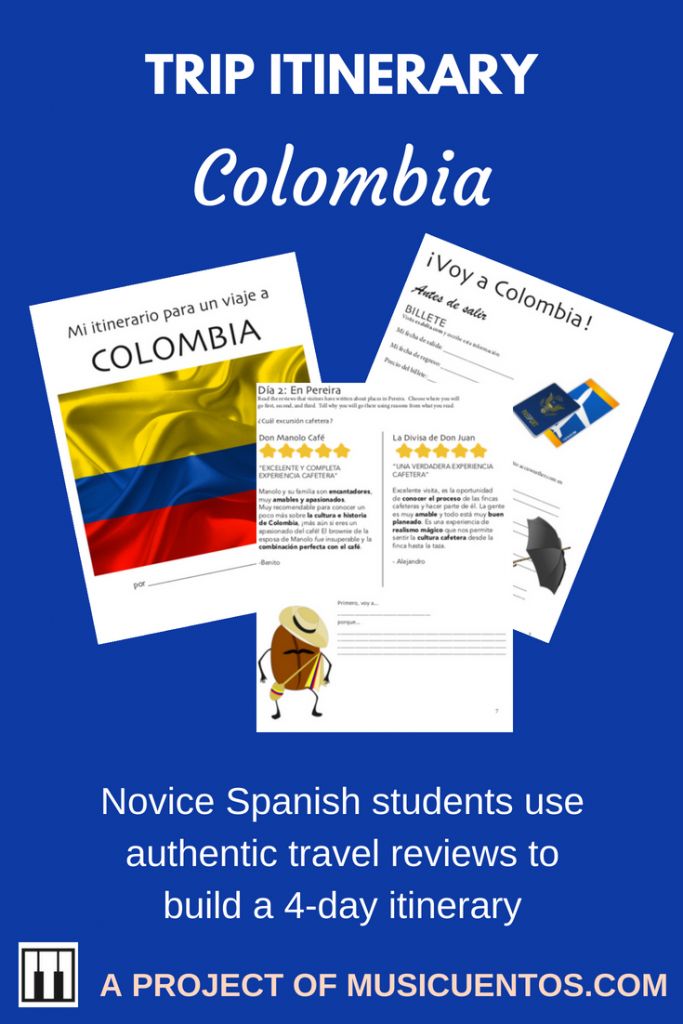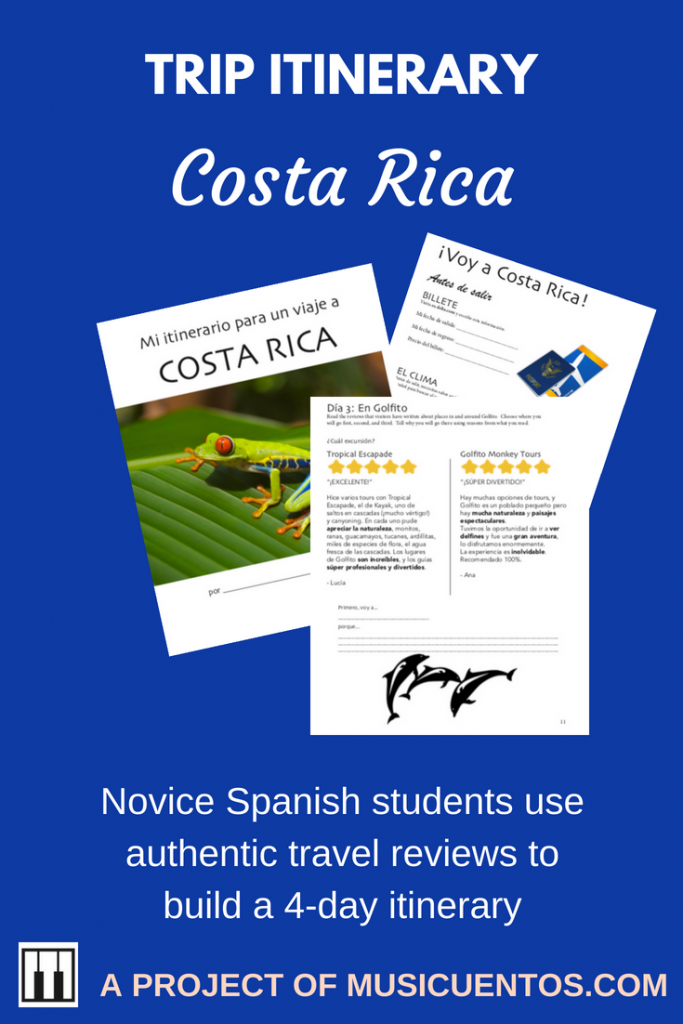Whether your Spanish class (Novice Mid to Intermediate Low) is exploring a novel, a particular country, or a travel theme, country-specific authentic resources can be a gold mine. But given that comprehensible input is what it takes, what can our learners understand? For one thing, highly visual resources like infographics and online travel brochures can be very comprehensible. Another hack to find resources quickly is to go to a source for resources written with short, repetitive, high-frequency language: travel reviews.
I recently blogged about leveraging TripAdvisor target-language reviews, and I previewed the resource that is one of my new projects: trip itineraries. Now that I’ve released the itineraries for Colombia and Costa Rica, I want to take this post to highlight this new resource.
Vocabulary
The document begins with a vocabulary section. These words and phrases represent some that I think novice, particularly novice-mid, learners will not know but may want or need them for higher comprehension of the reviews. I’ve separated them into categories. Some are broad like para describir, and others are specific to the itinerary, like los animales de Costa Rica (people talk about animals A LOT in Costa Rica travel reviews!).
Antes de salir
In this section, learners first research and report on the price of a ticket to fly to the place on a particular schedule. Then, the itinerary suggests they use AccuWeather’s Spanish section to report on current weather in each city or region represented in the itinerary. Based on that information, learners draw and label clothing and accessories they will take on their viaje, sketched in an outline of a maleta. Finally, in a section called La geografía de mi viaje, our travelers identify on a map the major geographical features of the country and mark the cities represented in the itinerary.
¡Vamos!
At last, we’re off! Each itinerary asks students to plan four days, each in a different city or region. For example, in the itinerary for Costa Rica, the plan starts in San José, goes to Tortuguero, then Golfito, then the Nicoya peninsula. For each “day” of the itinerary, learners will plan to visit three places, such as a national park, a museum, a restaurant, a hotel, an ecotour, etc.

Here’s where the critical thinking comes in: for each place category, the student has two options. This restaurant or that one? This boat tour or that one? In order to choose, learners have to read the reviews, and, then write their choice and reasons why they chose each one.

And what then? I highly recommend that you turn this into a multimodal activity. Have students interview each other about what they chose and why (interpersonal). Then, have them give a brief presentation on what they chose (presentational).
For now, I only have Colombia and Costa Rica complete. I’m ignoring the project briefly while I wrap up the Esperanza renace ebook reading guide, but then I plan to do as many as time will allow, until I’m out of Spanish-speaking countries. The next ones will probably be Spain, Mexico, and Ecuador. What other places would you like to see featured?
You can click below to see the itineraries on Teachers Pay Teachers (they’re $7.50 each, which gives you the license to copy them for all of your students), or click here to see my resource page, where more will appear as I complete them.


 If Musicuentos has significantly helped you in your language teaching journey, consider becoming part of the “thanks” crew on Patreon. Amigo-level patrons receive all material developed for conferences, and “La lotería” patrons receive every resource I produce, whether it’s a $2 activity or a $50 ebook guide, as thanks for their sponsorship. They’ve already gotten both of these itineraries in their Patreon feed.
If Musicuentos has significantly helped you in your language teaching journey, consider becoming part of the “thanks” crew on Patreon. Amigo-level patrons receive all material developed for conferences, and “La lotería” patrons receive every resource I produce, whether it’s a $2 activity or a $50 ebook guide, as thanks for their sponsorship. They’ve already gotten both of these itineraries in their Patreon feed.



